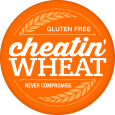- Nov 26, 2014
We recently attended the Italco Food Show in Vail and got to interact with a large variety of chefs, business owners and salespeople. Invariably, these customers had questions, lots of questions. Kathy and I relish the chance to answer questions face to face because of the dialog, interaction and understanding that ensues. However, that is not always possible and sometimes you just need a quick refresher. So here goes - the top 6 questions from food service folks heard at the food show.
Q. How can I offer gluten free foods in a shared kitchen?
A. If you are asking this question, you are already one step ahead. You recognize there are more factors to consider then just using gluten free ingredients. Issues such as cross-contamination, safe food handling, shared equipment, staff training, etc need to be considered in order to ensure a food is gluten free from ingredient to table. Our gluten free food service infographic offers a few tips to getting started. Also feel free to contact us - we are here to help!
Q. What is Cross Contamination?
A. Cross-contamination is when a food that normally does not contain gluten comes in contact with gluten during its processing or preparation, changing it to a gluten containing item. This can occur by using the same utensils to cut both gluten free and non gluten free foods, frying gluten free foods in the same oil as flour based batters, having an excessive amount of flour in the air while preparing gluten free foods, etc. Cross-contamination is at the root of many concerns for gluten free diners when eating out.
Q. How many people actually need to follow a gluten free diet?
A. There are over 40 million people following a gluten free diet. Whether the customer is a celiac or making a lifestyle choice, your business will benefit by having gluten free options available.
Q. How sick do you really get if you eat a little gluten?
A. This is a very personal question and it depends entirely on the individual. Gluten can be associated with “foggy mind”, depression, ADHD-like behavior, abdominal pain, bloating, diarrhea, constipation, headaches, bone or joint pain, chronic fatigue, intestinal damage, etc. Although there is no short answer, I can tell you that being asked this as a guest in your business makes me feel like you are not well-equipped to serve me gluten free foods and I often do not return.
Q. Is gluten free a fad?
A. There short answer is no. There will always be people who need to consume a gluten free diet. Are there people who eat gluten free by choice as opposed to necessity? Of course, but they are still paying customers who are looking to spend money with you.
Q. Why do gluten free foods cost more?
A. This is a bit of a loaded question. Many foods in your commercial kitchen are naturally gluten free. I am talking about things like fruit, vegetables, meat, poultry, fish, eggs, dairy, rice, beans, lentils, etc. Creating gluten free menu options from these items do not cost more. However, if you purchase a lot of pre-made and pre-packaged products, the gluten free counterpart is often more expensive than its wheat based cousin. This includes things like cookies, desserts, bread, crackers, pasta, etc. These items cost more because of ingredients, care and consideration. Gluten free foods often contain an assortment of grains and starches that are more expensive than wheat. In addition, in order to be considered gluten free, every ingredient used to make that food has to be traceably gluten free through every step of processing; from the farm to the mill to the manufacturing facility to packaging. Gluten free food producers cannot just source ingredients from the cheapest or easiest supplier. A lot more effort must go into ensuring a food labeled gluten free actually is and this cost money.





 Find our products
Find our products FAQs
FAQs Testimonials
Testimonials R&D Projects
R&D Projects